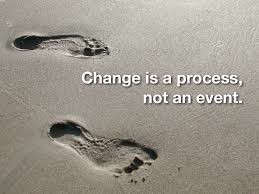From the plea bargain and previous acquittal of Gian Ghomeshi to the sexual harassment class action suit against the RCMP and other high profile cases, sexual harassment is definitely in the news but are we seeing justice done? Christy Clark said recently that sexual abuse, assault and harassment are a part of women’s everyday lives. These acts of violence and abuse continue to occur at alarming rates. A CBC guest Rebecca Solnit on the Sunday Edition’s June 19, 2016 discussion on violence in the US indicated that a rape occurs every 107 seconds and spousal abuse every 17 seconds. Why are we not doing enough to protect women in their homes and their workplaces?
The CBC executive whose quote I have used in the title was abused at work while a male coworker stood by. She agreed to an apology and a peace bond from Ghomeshi instead of enduring a trial. She may be quite right in stating that the truth can get tangled up in the justice system and the court of human opinion. Forgoing her anonymity, she felt the truth would best be served by making a statement about the abuse. Perpetrators seem to be able to continue harassing and abusing and evade responsibility for their actions. Gian Ghomeshi was acquitted of six charges in the first court case and  barely offered an apology or took any responsibility for his actions in the second.
barely offered an apology or took any responsibility for his actions in the second.
In the memoir “No One To Tell” Janet Merlo, a former RCMP officer in British Columbia, outlines the abuse and gender inequality she endured during her time with the force. Merlo was named as the representative plaintiff in the class action suit of over 100 women against the organization. Going through the courts is not working very well for the victims, mostly women. So what can be done to stop the rampant abuse and bring the perpetrators to account?
As a therapist I work with victims of sexual harassment, rape, physical assault and violent acts mainly perpetrated by men, many unreported. Discussing this issue with other therapists they tell me that the women they work with state that if they had a chance to go back they would not report sexual harassment and sexual assault. They say it is just too horrendous an experience to report. Furthermore many victims report losing their jobs while the offender(s) keep(s) their position. Women in male dominated occupations tend to fare pretty badly in the places they work. I have heard reports directly from women in construction jobs, police forces, and the military.
Politics aside, Christy Clark, BC Premier, recently disclosed being a victim of an assault when she was 13 years old. She said she never told anyone because of the shame associated with being a victim. Some people are cynical and say that her report was politically motivated. I am thinking this is not the case. Most women feel a high degree of shame associated with being a victim and I question why women and, specifically our premier, would talk about a traumatic and highly intimate situation for political purposes? Claims from perpetrators that women report for financial or other reasons are usually way off base. There is no amount of money in the world that would make up with the horrific circumstances, terror and public scrutiny involved with disclosing sexual harassment or assault. Also, research on recanting suggests that many victims recant because of the consequences of going through with the accusations for their families and the community.
I watched a Norwegian movie last week called HEVN (“revenge”) and the heroine of the film was bent on revenging the rape and subsequent suicide of her younger sister who was in her teens when the rape occurred. Initially she was going to kill the perpetrator but settled on setting him up and stripping him of his family and stature in the community. If the court system does not provide justice then must victims take retribution into their own hands? The problem with doing so as an “eye for an eye” suggests, will leave both parties injured, most likely badly. More succinctly, violence is not the answer.Violence is the problem.
The women in the RCMP have initiated a class action suit to settle their grievances around sexual assault and sexual harassment. Maybe civil action is better for compensating victims. Civil actions have a lower burden of truth and they can provide compensation for suffering and loss of positions the victims aspired to and felt proud of.
WorkSafe BC now accepts sexual harassment and bullying under their mental stress provisions if the abuse if work related. It is also incumbent on employers to have a system of regulation and protection in place. Certainly the criminal courts did not appear to serve Gian Ghomeshi’s victims well. Many victims just keep quiet and perpetrators continue to harass, abuse, and rape because they believe they can and they believe THAT THEY WILL NEVER GET CAUGHT.
Another high profile example is the Stanford sexual assault case where the perpetrator’s father wrote a letter decrying the six month sentence for his son, Brock Turner, stating it was too harsh for “20 minutes of action”. What if he got 20 months for each minute of action? Legal experts have said that this sentence was more in line with a “first offence of burglary or auto theft”. Another comment from Danielle De Smeth, a California based criminal attorney, was that “it emboldens those of privilege or an athletic background”. Sure does! Two young black men were hung in the 1942 on a bridge on the Chickasawhay river for being within 10 feet of a white teenage girl.
So what is the quickest way to the truth and how are we going to stop perpetrators from sexually abusing? Sexual assault and harassment is a technique of power as is withdrawing reproductive services for women. Rape is used by soldiers in war zones to totally control the vanquished. Racism is more of an issue in economically stressful times. Maybe, sexual assault and harassment is like racism where the perpetrators objectify and dehumanize their prey because they feel they are losing power economically and politically. Mark Lepine killed 14 women in Montreal for just that reason. In spousal abuse perpetrators keep their partners powerless so they will not leave. Sexual abuse and assault are the tools that perpetrators use to subjugate women and children.
Maybe the solutions to stopping abuse lie beyond the criminal courts in changing workplace culture, economic inequality and societal attitudes. As long as women remain unequal economically and societally along with ethnic minorities and are kept powerless to bring the abusers to account, the abuse will continue despite the criminality of the acts. Even if we have regulations that prohibit sexual harassment in the workplace, many victims will not speak up because of fear of losing their jobs, being ostracized for speaking up, and concern about the onerous process of going through a system that is fraught with difficulties. This is a challenging issue and we must do a better job of protecting women in the workplace and in the community.
Your comments are welcome
*The views expressed by our authors are personal opinions and do not necessarily reflect the views of the CCPA
 “LinkedIn is the site where we’re investing time, not wasting time,” Leslie Hughes, LinkedIn optimization specialist and owner of PunchMedia, told Career Buzz listeners. “Linkedin is not the sexy social media site, it’s not the one everyone goes to gleefully every morning,” said Leslie, but it is the business network, so it pays to make it good. How?
“LinkedIn is the site where we’re investing time, not wasting time,” Leslie Hughes, LinkedIn optimization specialist and owner of PunchMedia, told Career Buzz listeners. “Linkedin is not the sexy social media site, it’s not the one everyone goes to gleefully every morning,” said Leslie, but it is the business network, so it pays to make it good. How?


 On the surface Melissa Hughes had it all. In her words “On the outside, my life at 35 looked great — a promising career, a doting partner, an elegant home, things, vacations, a big engagement ring, money in the bank… There was just one problem: I wasn’t happy.”
On the surface Melissa Hughes had it all. In her words “On the outside, my life at 35 looked great — a promising career, a doting partner, an elegant home, things, vacations, a big engagement ring, money in the bank… There was just one problem: I wasn’t happy.”

